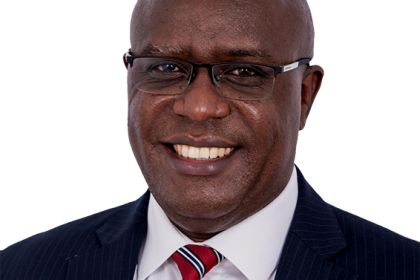Uncompromising Mutebile defends Crane Bank ouster from financial markets
 July 17, 2018 – Bank of Uganda Governor Emmanuel Tumusiime Mutebile has today defended the regulator’s decision to get Crane Bank out of the market, arguing that do otherwise would erode incentives for compliance with prudential regulation.
July 17, 2018 – Bank of Uganda Governor Emmanuel Tumusiime Mutebile has today defended the regulator’s decision to get Crane Bank out of the market, arguing that do otherwise would erode incentives for compliance with prudential regulation.
Speaking during the Uganda Bankers Association annual conference earlier today, Mutebile said Crane Bank’s capital position had deteriorated so much that the managers and owners who had presided over the institutions negative drift could not be relied upon to reverse the situation.
“Crane Bank was massively insolvent, with core capital of negative UGX 240 billion, as a result of mismanagement and fraud. The notion that this bank could have been rehabilitated by its owners, the same people who were responsible for its failure, if only the BOU had provided more liquidity support and allowed the owners to remain in control, is not tenable. In reality the BOU had no other options, if it wished to minimise the losses incurred by the bank and protect the interests of its depositors, other than to take over Crane Bank and resolve it, Mutebile told the conference whose theme was: Financial Sector Stability: Managing Risk in a Fast Growing and Fast Changing Environment.
BoU took over management of Crane Bank in October 2016 and later sold it to DFCU Bank through a purchase of assets and assumption of liabilities agreement in February 2017.
The move resulted in a suit against the regulator by the owners of Crane Bank and a stream of negative publicity against DFCU bank in recent weeks.
Mutebile said the Bank of Uganda’s role was not to micro-manage the business of financial institutions but to protect the interests of depositors while ensuring a stable financial system.
“As such the purpose of our regulation and supervision is prudential rather than economic; we do not attempt to regulate the allocation of resources for economic goals but we are concerned with safety and soundness of financial institutions and the financial system as a whole,” he said.
Mutebile explained that if the public lost faith and began to think that their deposits were not safe, financial intermediation would suffer.
As a result, the focus of bank supervision and regulation was to ensure that deposit taking financial institutions maintain adequate capital buffers to absorb any losses they may encounter.
“We also implement a policy of prompt corrective action, stipulated in the Financial Institutions Act, to ensure early regulatory intervention to try and remedy problems in distressed financial institutions before depositors’ funds are lost.
“A fundamental tenet of our prudential regulation is the avoidance of regulatory forbearance, which involves the regulator allowing a bank to breach prudential regulations or to continue operating as normal when it cannot meet the minimum capital adequacy regulations. Regulatory forbearance crates moral hazard which worsens the incentives for banks to be managed in a safe and sound manner. This is particularly pertinent in respect to a bank’s ability to comply with capital adequacy regulations,” Mutebile added.
He explained that capital provides an incentive to the owners of a bank to manage it prudently, in order to protect their own investment in the bank.
“Higher levels of capital help to better align the interests of bank owners and depositors for sound bank management. Conversely, when a bank is undercapitalised or insolvent, the incentives facing its owners for sound management are weakened,” he said adding that the central bank is not required to bail out distressed banks through liquidity support.
He said such approach would simply create incentives for the distressed bank to carry on as usual, sinking deeper into loss at the taxpayers’ expense.
“It would also send a signal to all participants in financial markets that mismanagement carries no consequences for the owners and managers of banks,” he explained.
He said an audit of Crane Bank in October 2016, found that Crane Bank was insolvent, to the tune of negative UGX 240 billion, as a result of mismanagement and fraud.
“The notion that this bank could have been rehabilitated by its owners, the same people who were responsible for its failure, if only the BOU had provided more liquidity support and allowed the owners to remain in control, is not tenable. In reality the BOU had no other options, if it wished to minimise the losses incurred by the bank and protect the interests of its depositors, other than to take over Crane Bank and resolve it,” a tough talking Mutebile said.

 AfDB puts up nearly $700m for Burundi-Tanzania SGR link
AfDB puts up nearly $700m for Burundi-Tanzania SGR link
 Bank of Uganda keeps base rate at 9.5% to support surge in GDP growth
Bank of Uganda keeps base rate at 9.5% to support surge in GDP growth
 Africans must resist being bulldozed in energy transition timetable debate
Africans must resist being bulldozed in energy transition timetable debate
 Standard Bank Group appoints new Chief Executive for Uganda Holdings
Standard Bank Group appoints new Chief Executive for Uganda Holdings
 TradeMark Africa introduces new App to limit EAC trade barriers
TradeMark Africa introduces new App to limit EAC trade barriers
 Employer hiring up during November as Stanbic PMI rises to 53.4
Employer hiring up during November as Stanbic PMI rises to 53.4
